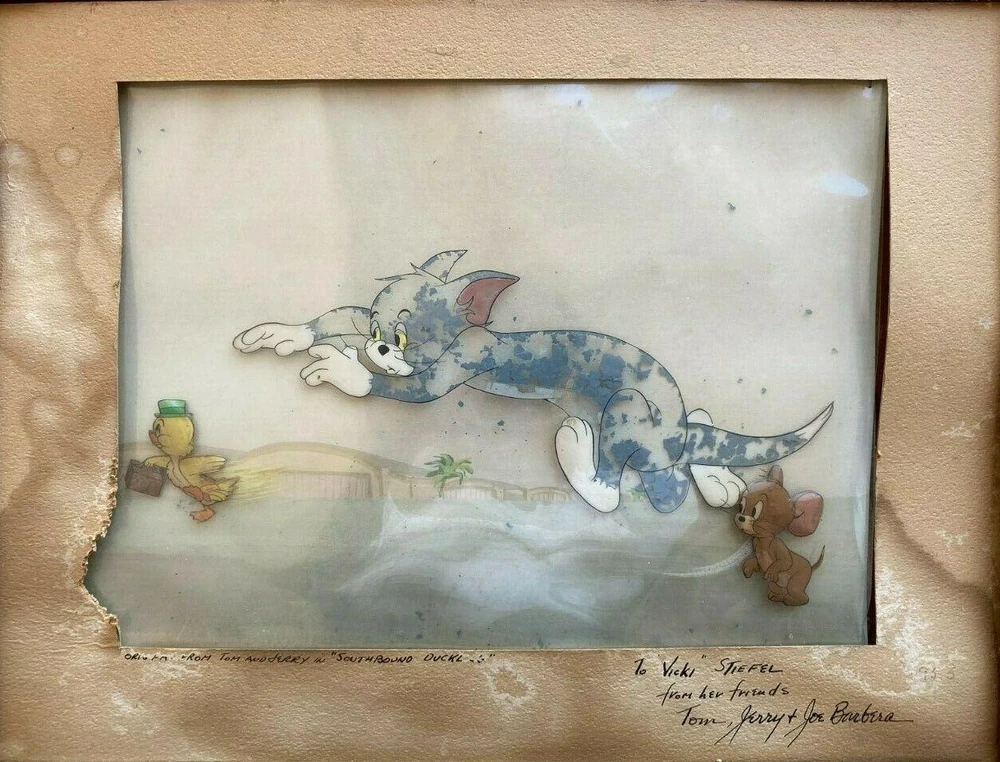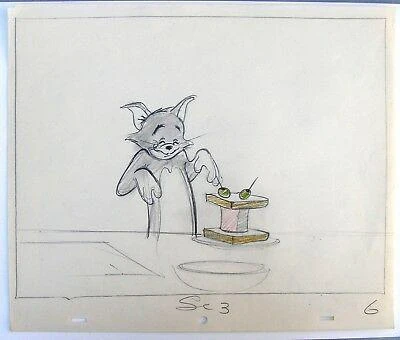
Mouse for Sale marks the 92nd Tom and Jerry short film. Though many of the Tom and Jerry cartoons had gone into CinemaScope by this time, this film is not in the CinemaScope format. By the next year, all Tom and Jerry cartoons would be in Cinemascope.
In this short film, Tom reads in a newspaper about a pet store willing to pay lots of money for a white mouse. Tom paints Jerry white and sells him to the pet store. Tom's owner finds the money that Tom got and uses it to go shopping. She comes back having just bought the painted white Jerry. When Tom fights with Jerry his owner gets angry at him for fighting with her new pet. This leaves Tom to try and get the paint off of Jerry to prove that he is not really a white mouse.
This is a charming little cartoon. The storyline is a wonderful twist on the classic Tom and Jerry formula. One of the most impressive factors to the Hanna and Barbera Tom and Jerry shorts is how the filmmakers were so often able to come up with new story ideas for a series that had such a simple premise. That is definitely true here as this short feels quite original even if it borrows an element or two from previous cartoons. Yet, while this cartoon makes some twists on the typical Tom and Jerry formula, it also stays true to what fans love about the series. We still get to enjoy seeing these two foes have a real battle of wits. Many of the ways the two tried to one-up the other were very clever. This cartoon also benefits from some strong character animation. The animation of Jerry dancing is simply delightful and adorable. Meanwhile Tom's over the top Tex Avery inspired takes are a lot of fun. If I had one complaint about this film, it is that while the humor is often clever, it is not really laugh out loud funny. As was becoming more common with the Tom and Jerry films of this period, I found myself smiling and chuckling at the gags but rarely laughing out loud. The only gag that is really laugh out loud funny is the ending gag. This is a perfect Tom and Jerry ending and just the type of clever twist that makes me love this series.
The credited animators on this film include Kenneth Muse, Ed Barge, Irven Spence and Ray Patterson. Robert Gentle is the credited background artist. This was not the first Tom and Jerry short where the Jerry being painted white was used as a plot point. That had been done before in The Missing Mouse (1953). However other than that simple idea, the storyline and the gags in each cartoon are very different from each other. The gag involving Tom painting a metal bolt as a piece of cheese and then using a magnet to catch Jerry was tried before by Butch (the black cat) in Trap Happy (1946). This cartoon is available on the DVD set, Tom and Jerry Spotlight Collection Vol. 3. The 2006 album, TOM AND JERRY & TEX AVERY, TOO! Volume 1: The 1950’s, features musical scores from various MGM cartoons. Included here is Scott Bradley's score for Mouse for Sale.
-Michael J. Ruhland
Resources Used
Of Mice and Magic: A History of American Animated Cartoons by Leonard Maltin
https://hanna-barberawiki.com/wiki/Mouse_for_Sale_(theatrical_short)#Home_availability
https://tomandjerry.fandom.com/wiki/Mouse_for_Sale
https://cartoonresearch.com/index.php/tex-tom-jerry-droopy-on-scott-bradley-soundtracks/






















